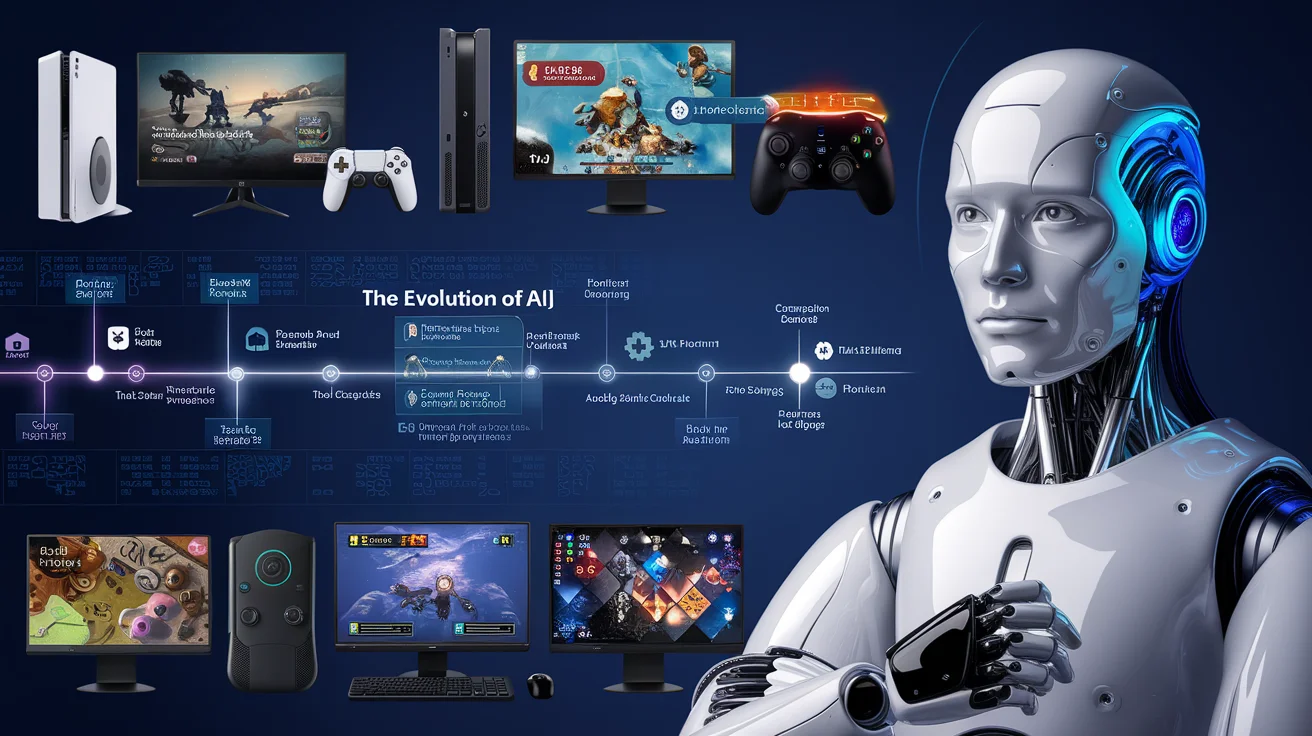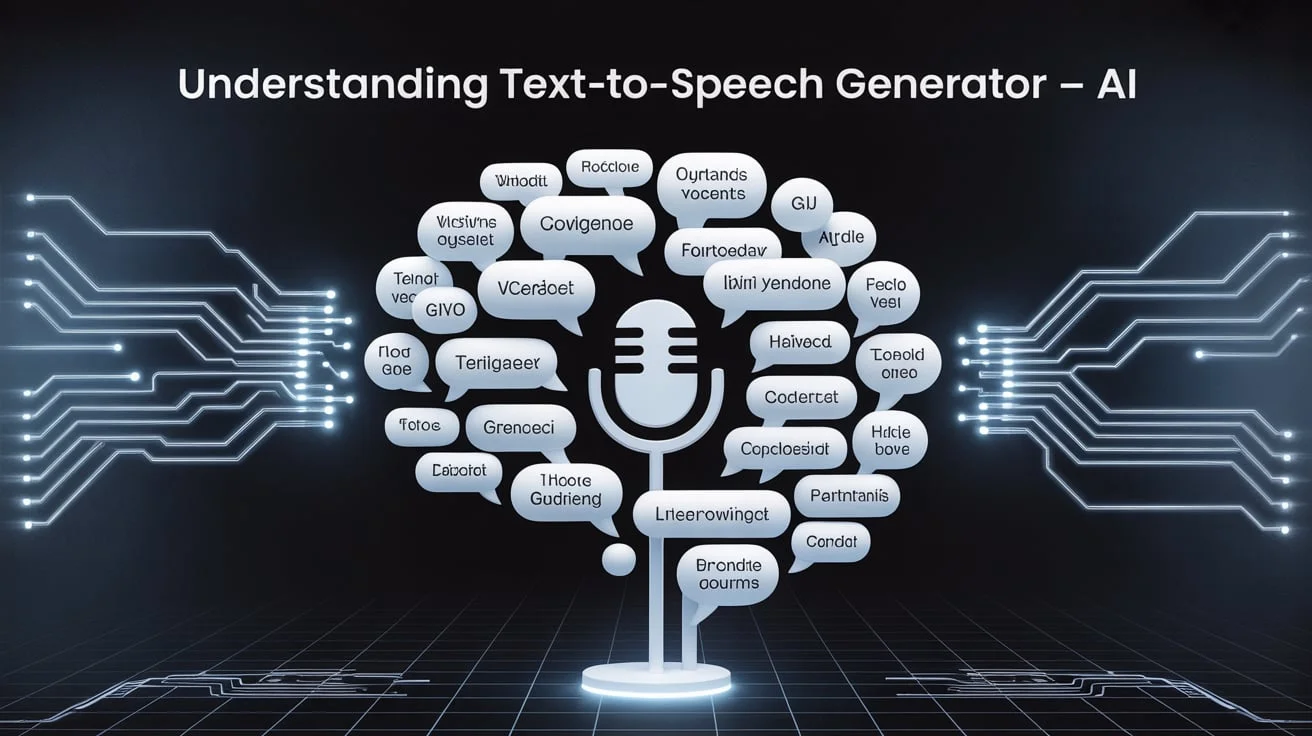AI in Gaming: Revolutionising Play is changing how we experience, play, and interact with games today. From basic movement algorithms to deeply personalised narratives, the evolution of AI in gaming has led to smarter, more responsive, and immersive virtual worlds that evolve in real-time. AI is now the invisible game master shaping every decision, encounter, and storyline.
Game developers are using AI to create characters that think, worlds that adapt, and experiences that personalise with every move. Unlike older games with scripted actions, AI makes each session unique and unpredictable. This revolution is not just in graphics or speed, but in intelligence.
Players are now part of living, breathing game environments. Every action, every decision shapes the game differently. That’s why the phrase AI in Gaming: Revolutionising Play is more relevant than ever before.
AI-Driven NPCS: From Static to Smart

In the past, non-playable characters (NPCS) in video games were static and predictable. They followed a set of pre-programmed behaviours, meaning their actions were limited and scripted. For example, an NPC might just stand in one place, repeat a few lines of dialogue, or follow a specific path, regardless of how the player interacts with them. These characters didn’t “think” or “adapt” to anything you did in the game.
However, with the introduction of Artificial Intelligence (AI), NPCS have evolved from these rigid, static figures to intelligent, dynamic entities. Now, NPCs can learn from and react to the player’s actions in real-time, creating a more immersive and unpredictable gaming experience.
For instance, AI enables NPCs to make decisions based on the player’s behavior. If a player chooses to take a stealthy approach, the NPCS might become more cautious, adjusting their tactics accordingly.
If the player becomes aggressive, NPCS can respond by calling for reinforcements or changing their strategies to challenge the player. Essentially, these NPCS are no longer just obstacles or side characters; they are interactive, smart participants in the game’s world.
How AI Makes NPCS Smarter:
- Learning and Adapting: AI enables NPCs to learn from player behavior and adapt their responses. For example, if a player repeatedly uses certain strategies, NPCS can analyse those tactics and find new ways to counter them.
- Emotional Intelligence: With AI, NPCS can display emotions and react to the player’s actions. An NPC might become suspicious if a player sneaks around or may show gratitude if helped, making the interactions feel more human-like.
- Strategic Thinking: Instead of just following a fixed script, NPCS with AI can plan and execute strategies. This adds a level of unpredictability, keeping players on their toes during gameplay.
Benefits of AI-Driven NPCS:
- Increased Immersion: Players feel more engaged when NPCS seem to think and act like real people.
- Unpredictability: AI-driven NPCS create varied and fresh gameplay experiences each time you play, as they don’t follow a set routine.
- Enhanced Challenge: Smarter NPCS lead to more challenging encounters, as they react to the player’s strategies and adapt accordingly.
In short, AI has completely transformed NPCS, making them more realistic, engaging, and integral to the story and gameplay. Instead of merely being “there,” they become active, dynamic elements that enhance the overall gaming experience.
Personalised Gameplay: A Game That Knows You

AI is now tailoring games to individual players. It learns your behaviour, tracks your decisions, and adapts storylines or missions accordingly. This personal touch makes every experience feel unique and memorable.
Whether you prefer action, stealth, or puzzles, the AI customises content to fit your playstyle. Difficulty levels also adjust in real-time for improved engagement. This keeps players motivated and challenged without getting frustrated.
Personalisation goes deeper with AI suggesting game items, paths, or endings based on your gameplay history.
Key Advantages of AI in Gaming
- Real-time NPC learning makes enemy behaviour unpredictable
- Adaptive difficulty levels improve both fun and fairness.
- AI-generated storylines evolve with your decision.
- Level designs change dynamically for endless gameplay.
- Realistic emotions and gestures bring characters to life.
Procedural Content Creation: Infinite Possibilities
AI doesn’t just control characters—it also builds worlds. Through procedural content generation, AI can automatically create maps, dungeons, and environments. This reduces manual labour for developers and adds endless variety for gamers.
These environments are not random—they follow a logical pattern and adapt to the player’s actions. Whether it’s a new planet in a space game or a forest in an RPG, AI makes sure it feels real. Every time you run through the game, it becomes a new adventure.
By analysing player preferences, AI can also suggest or spawn new missions and side quests on the fly.
Voice AI: Talking to Games Like Never Before
Imagine conversing with a game character and receiving genuine, intelligent responses. AI voice synthesis and dialogue systems now make that possible. They generate natural conversations without the need for pre-recorded lines.
Games now feature characters that listen, understand, and speak back using AI. These interactions are not only more engaging but also reduce costs and time for game developers. Players feel more connected when the game responds in real-time.
AI-powered voice also helps narrate missions, provide hints, or guide players without breaking immersion.
AI in Game Testing and Debugging
Testing and fixing bugs is one of the longest phases in game development. But now, AI bots can simulate thousands of gameplay sessions in minutes. They automatically detect bugs, performance issues, and gameplay flaws.
This accelerates game development and enhances the overall quality. Developers can focus more on creativity and storytelling while AI handles technical testing. Players, in turn, enjoy smoother and more stable game releases.
Faster testing also means faster updates and patches for live games.
Making Games More Accessible
In recent years, one of the most significant advancements in gaming has been making games more accessible to a wider range of players, particularly those with disabilities. AI and other technological innovations have played a significant role in this shift, enabling everyone, regardless of their physical or cognitive abilities, to enjoy gaming.
How AI is Helping Make Games More Accessible:
- Voice Control and Speech Recognition: Many modern games now feature voice-controlled options, which help players who may struggle with using traditional controllers or keyboards. AI-driven speech recognition enables players to interact with the game by simply speaking, whether issuing commands, controlling characters, or navigating menus. This makes games much easier to play for individuals with motor impairments.
- Real-Time Subtitles and Audio Descriptions: AI is utilized to generate real-time subtitles and audio descriptions for individuals with hearing or visual impairments. These features can describe in-game events, dialogues, or even provide narrated hints, making games more inclusive. Players who are hard of hearing or visually impaired can follow the game’s story and actions without missing any details.
- Adaptive Difficulty and Customisation: Games can utilise AI to automatically adjust the difficulty according to the player’s skill level or needs. This is particularly useful for players with learning disabilities or those who need more time to react. Additionally, players can customise controls and gameplay mechanics to suit their abilities, making games more comfortable to play.
- Visual Cues and Colour Adjustments: AI-driven systems can adjust the colour palette of games to accommodate players with colour blindness or difficulty distinguishing certain hues. These features make it easier for players to differentiate between important objects, characters, or enemies, ensuring they don’t miss critical in-game information.
- Assistive Technologies: Many games now incorporate assistive technologies, such as adaptive controllers, eye-tracking systems, and motion-sensing devices. These devices allow players to interact with games using alternative methods such as eye movements, head gestures, or even muscle movements, which can be a game-changer for individuals with severe physical disabilities.
Why This Matters:
- Inclusivity: Accessibility features in games make sure that all players, regardless of their abilities, can have a fun and fulfilling gaming experience. It breaks down barriers and opens up gaming to a broader audience, creating a more inclusive gaming culture.
- Increased Engagement: Players who can personalize their gaming experience based on their needs are more likely to engage deeply with the game, leading to a better overall experience for everyone. It helps reduce frustration and allows players to immerse themselves in the game’s world fully.
- More Opportunities for Developers: By embracing accessibility, game developers reach a larger audience, including those with disabilities. This not only helps create a more inclusive community but also opens up new markets for game sales, leading to greater commercial success.
Key Accessibility Features Driven by AI:
- Voice Command Integration for easier navigation
- Real-time subtitles and descriptive audio for hearing and vision impairments
- Customisable control schemes for players with physical limitations
- Colour adjustments to support colorblind players
- Adaptive difficulty settings that automatically adjust based on the player’s ability
Multiplayer Balance and Fairness with AI
In multiplayer games, AI ensures fair matchmaking by analysing skill levels, past performances, and even behaviour. This results in balanced matches and fewer instances of rage quitting. AI can also simulate human players when real opponents aren’t available.
Bots have become increasingly intelligent, mimicking human play styles with remarkable accuracy. Whether in FPS, sports, or MOBAS, AI keeps the competition fresh and fair. Toxic behaviour can also be detected and flagged using AI moderation tools.
This enhances the online gaming environment and reduces instances of abuse and cheating.
Final Thoughts: AI in Gaming Is Just the Beginning
AI in Gaming: Revolutionising Play is a true statement of where the industry is heading. With smarter NPCS, adaptive challenges, and custom experiences, AI is shaping the future of play. And this is only the start.
As AI technology advances, it will become more integrated into every part of the game, from development to player experience. Expect more intelligent worlds, lifelike characters, and voice-controlled adventures in upcoming releases.
Soon, the distinction between game and reality may become impossible to discern. The next level of gaming has already begun, with AI leading the way.
FAQ: AI in Gaming: Revolutionising Play
1. What is AI in gaming?
AI in gaming utilises artificial intelligence to enhance characters, environments, and gameplay, making them smarter and more interactive. This adaptation enables them to respond to players’ actions in real-time.
2. How does AI improve NPC behaviour?
AI enables NPCs to react dynamically to player actions, learning and adapting their strategies instead of following scripted behaviors.
3. How does AI improve accessibility in games?
AI enables features such as voice commands, real-time subtitles, customizable controls, and adaptive difficulty, making games more accessible to players with disabilities.
4. Can AI adjust game difficulty?
Yes, AI can adjust the difficulty in real-time based on the player’s performance, ensuring an engaging experience for all skill levels.
5. How does AI help game development?
AI automates tasks, generates content, and creates smarter enemies, speeding up development and improving the game’s quality.




